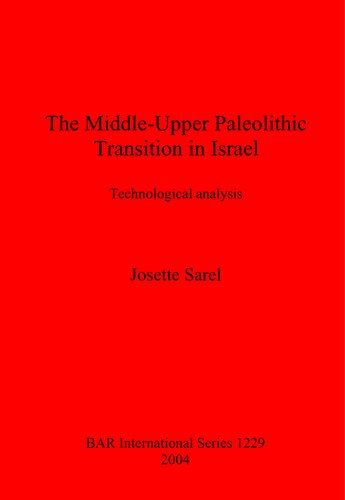

Most ebook files are in PDF format, so you can easily read them using various software such as Foxit Reader or directly on the Google Chrome browser.
Some ebook files are released by publishers in other formats such as .awz, .mobi, .epub, .fb2, etc. You may need to install specific software to read these formats on mobile/PC, such as Calibre.
Please read the tutorial at this link: https://ebookbell.com/faq
We offer FREE conversion to the popular formats you request; however, this may take some time. Therefore, right after payment, please email us, and we will try to provide the service as quickly as possible.
For some exceptional file formats or broken links (if any), please refrain from opening any disputes. Instead, email us first, and we will try to assist within a maximum of 6 hours.
EbookBell Team

5.0
110 reviewsThis work is an attempt to examine the problem of validity in the Middle-Upper Paleolithic transitional industry in Northern Israel. As it has generally been accepted that no Middle-Upper Paleolithic transition occurred in Northern Israel, and that the transitional industry as defined by Garrod (1951) had been derived from mixed layers (Bar-Yosef and Vandermeersch, 1972), the Northern transitional industries were therefore considered for three decades to be irrelevant for analysis (Kuhn et at 1999: 507). Nevertheless, the significant numbers of Northern Israeli "transitional" sites, yielding rich deposits, as well as the recent discoveries of well stratified transitional industries in the Levant, have led us to reconsider this supposition. If it is found that the "enigmatic" assemblages from Northern Israel do indeed share the same cultural background with the assemblages which have been derived from undisturbed layers (such as at Ksar Akil XXV-XVI in Lebanon), the existence of the transitional industry in Northern Israel will be validated.
With the aid of the technological analysis, we have undertaken the determination of the reduction strategies and the main tool types used in the different assemblages. To evaluate the degree of similarities and dissimilarities between the assemblages under consideration, we have used two statistic tests: the JMP Cluster Analysis and the principal components on unsealed of the multivariable analysis.
In comparing the "enigmatic" assemblages from Northern Israel with those deriving from undisturbed layers, our current argument gives much support to the theory of a transitional phenomenon in Northern Israel. Both the Northern Israeli and Ksar Akil assemblages demonstrate a great diversity of reduction strategies and products. They have all yielded assemblages which share a number of features, such as the association between Upper Paleolithic blade and Levallois products and similar reduction strategies. They exhibit similar reduction
…